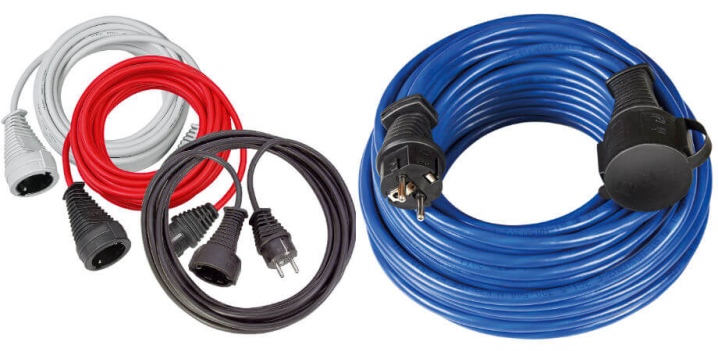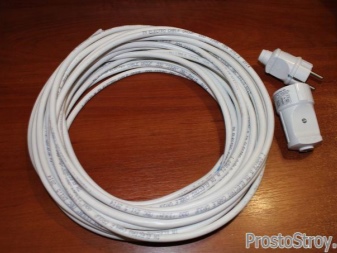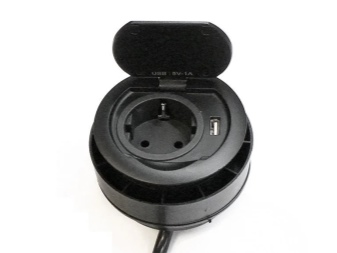Extension cords with one outlet: characteristics and selection

An extension cord is a must in every home. But in order to use it comfortably, it is important to get the right model. Extension cords differ from each other in a number of technical and other characteristics that must be taken into account.
Specifications
An extension cord (popularly also called a "carrier") is an item that is indispensable both in an apartment and in a private house. The single-socket extension cord has an undeniable advantage - compactness.
The device consists of three main parts:
- box with an outlet;
- the wire;
- plug (plug).


The box is most often made of plastic. In high-quality devices for lengthening, a wire of the PVA type is used. If we talk about its internal component, then it contains:
- conductive core;
- insulation made of PVC plastic;
- PVC sheath.

Sometimes there are single extension cords with a wire such as ШВВП. Its disadvantage is its fragility. The fact is that the shell of such a wire is excessively thin, therefore, with regular use, it can burst rather quickly.
In the manufacture of a separate category of extension cords, a KG-type wire is used. For household needs, there is no need to purchase such an extension cord. As a rule, it is used when performing work on construction sites or in production in workshops.
The peculiarity of the wire is that the sheath and insulation are made not of PVC, but of a more durable material - rubber.

Views
An electrical extension cord with one outlet contains only one socket. Its purpose is to supply electrical current to devices if the length of their cord is not enough to reach a stationary outlet. Extension cords differ from each other in many characteristics. So, according to the method of connecting the cable, collapsible and non-collapsible extension cords are distinguished. If the model is collapsible, then there are bolts on the box body. If repair is necessary, they can be unscrewed and obsolete parts can be replaced. Non-dismountable devices have a one-piece box.
By the type of protection, extension cords can be either conventional or reinforced. The former correspond to standard security measures. An extension cord with reinforced protection is characterized by the fact that it has double insulation, as well as additional protective elements on the box. The single mains power strip is different in the size of the extension wire. It can be 10, 5 and 3 m in length. But the most common are models with a cable length of 2 meters. They are used for household needs.


In terms of power, extension cords can be divided into 3 large categories.
- Low-power (not exceeding 1 kilowatt). Suitable for domestic use. You can connect hair dryers, curling irons and other small appliances to them.
- Average... Suitable for washing machines, vacuum cleaners, refrigerators. Their power does not exceed 2 kilowatts.
- Power. They are mainly used on a production scale, but they can also be connected at home, for example, to operate a welding machine. The power of such devices is more than 2.5 kilowatts.
Of course, extension cords also differ from each other in their external characteristics (color, design, material of manufacture).
Classic options are very popular with buyers: black or white.


Selection rules
To make the right choice in an electrical store, you need to heed the advice of experts in this field. When buying an extension cord, special attention should be paid to such nuances as:
- presence or absence of grounding;
- cord length;
- maximum permissible load;
- isolation level;
- the presence of a protective machine;
- the presence of additional elements.
Grounding is a very important condition, since the protection of a person from electric shock depends on it. In addition, grounding will save household appliances in the event of an unforeseen situation. Experts recommend choosing devices with ground, if they are planned to be used to connect such household appliances as a computer, TV, refrigerator, washing machine.


As for the length of the cord, then it all depends on how far from the used equipment the stationary outlet will be. Typically, the minimum wire length is 2 meters and the maximum is 30 meters. The maximum load is indicated on the box body... Here, too, it all depends on what power the technique will be connected to the outlet. Cable insulation has already been mentioned above. Double layer is more reliable.
The presence of a circuit breaker on the extension cord is necessary if systematic voltage drops are observed in the network. The machine will not allow overload.
Among the most common additional elements, the presence of an indicator should be noted. It allows you to determine if the device is on or off.


If you follow these recommendations, then you can choose a quality extension cord that will last a long time.
See below for tips on choosing an extension cord.













The comment was sent successfully.